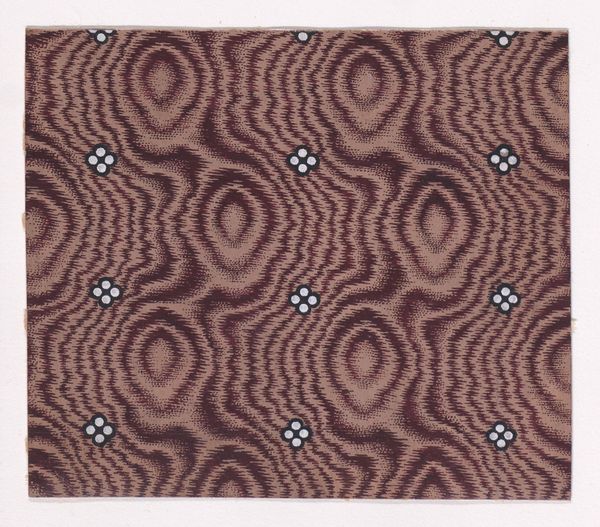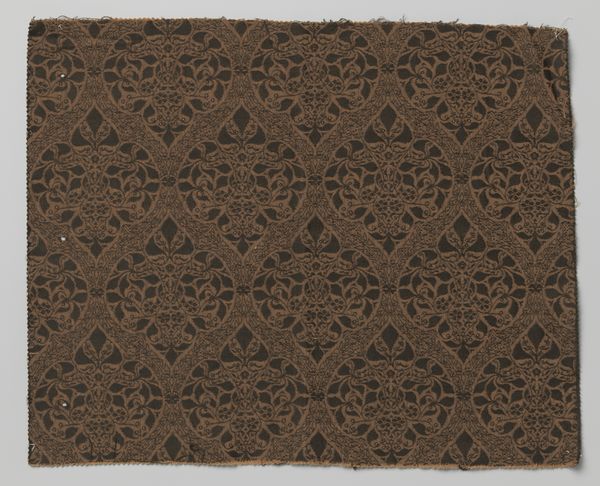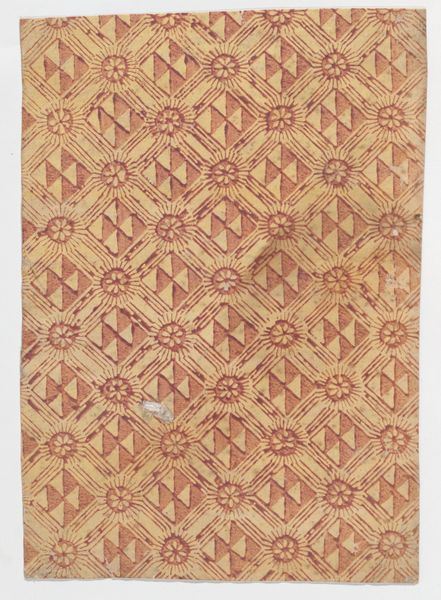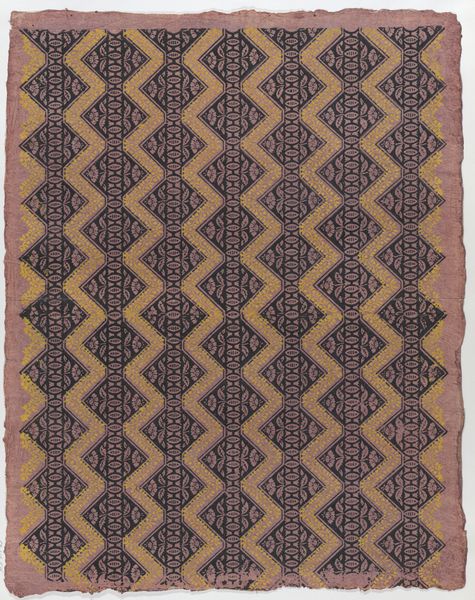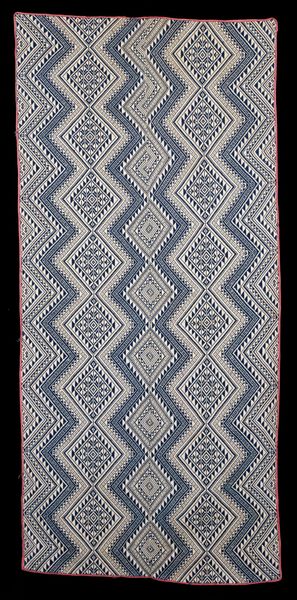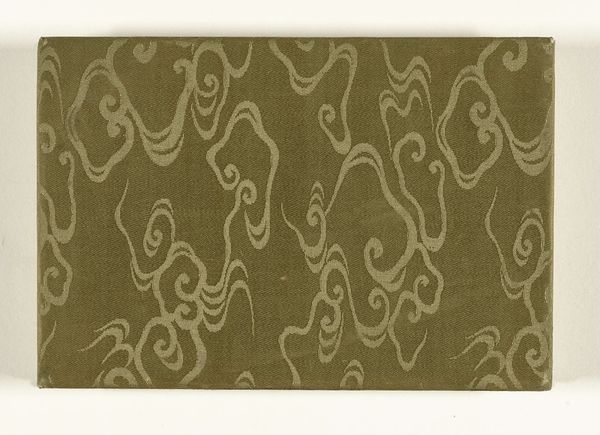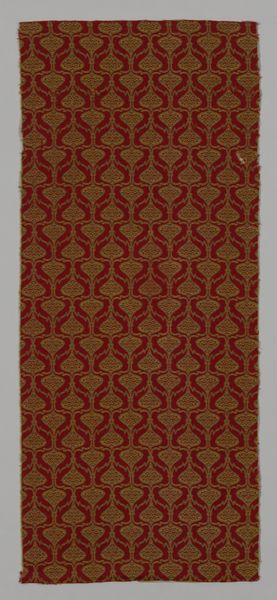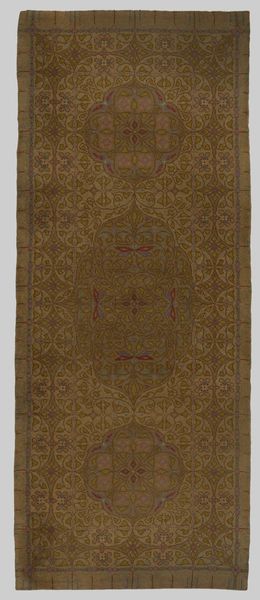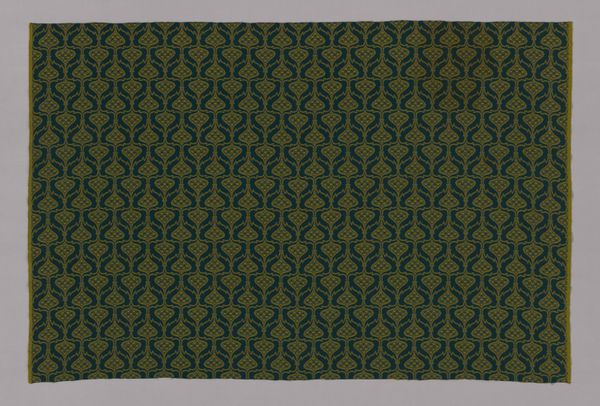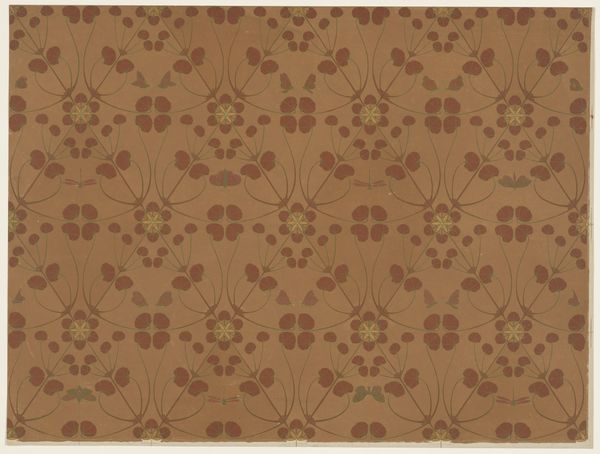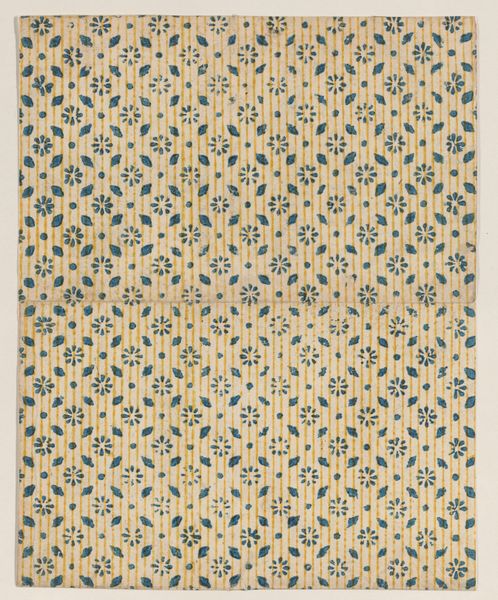
Album aangeboden aan dr. ir. H.M.J. Hart door personeel Centraal Kantoor voor de Statistiek te Batavia in 1935 Possibly 1935
0:00
0:00
weaving, textile
#
pattern heavy
#
natural stone pattern
#
naturalistic pattern
#
weaving
#
textile
#
pattern background
#
organic pattern
#
geometric
#
repetition of pattern
#
vertical pattern
#
wooden texture
#
pattern repetition
#
layered pattern
Dimensions: length 22.7 cm, width 30 cm, width 60 cm, thickness 2 cm
Copyright: Rijks Museum: Open Domain
Curator: Good morning. Here we have an exquisite woven textile from 1935, titled "Album aangeboden aan dr. ir. H.M.J. Hart door personeel Centraal Kantoor voor de Statistiek te Batavia." It was likely a gift from the staff of the Central Bureau of Statistics in Batavia to Dr. Hart. Editor: The overwhelming detail is striking! My initial reaction is a sense of opulent domesticity—it feels simultaneously handmade and yet somehow intensely refined. I find it incredibly calming. Curator: Calm, indeed. Note the meticulous geometric composition. The diamond motifs, layered with complex interior designs, exhibit a controlled yet rhythmic pattern, conforming perfectly to structuralist notions of repetition and variation. How do you interpret the earth tones, Editor? Editor: For me, those earthen hues really highlight its connection to the natural fibers from which it was crafted and I'm interested in how the item’s location of production–Batavia at that time, Java– speaks to colonialist patterns of resource use and manufacturing. Do we know what those fibers actually are, Curator? Curator: That precise material is currently unknown. But the repetitive lozenge evokes something primordial, almost biological in its arrangement. Think of molecular structures or crystalline forms. Editor: Fascinating. And that connection you’re making is deeply impactful, in this presentation to Dr Hart it feels like this small act also represents this person's influence. We can begin to ponder then not only on Hart, and Java, but how statisticians’ labors literally wove the social and political fabric of early 20th century colonial society. Curator: Precisely. I perceive an attempt to formalize or perhaps monumentalize the contributions made, the structural integrity representing his perceived importance. A striking intersection of individual acknowledgment within systemic pattern. Editor: Looking at it from a different angle, the album serves as a form of documentation—not just of personal achievement but, also, a record of the workers labor and the natural sources employed in production during that period of societal structure under Dr. Hart. Curator: Yes. And even as we are discussing it, we cannot disregard that textile artistry elevates that function in surprising ways through the geometry, that’s not necessarily about function, the symbolic weight gives rise to new readings… Editor: An object lesson that challenges conventional binaries then between decoration and purpose? Perhaps that liminal space then is the most powerful thing that we take away today from that exchange.
Comments
No comments
Be the first to comment and join the conversation on the ultimate creative platform.
